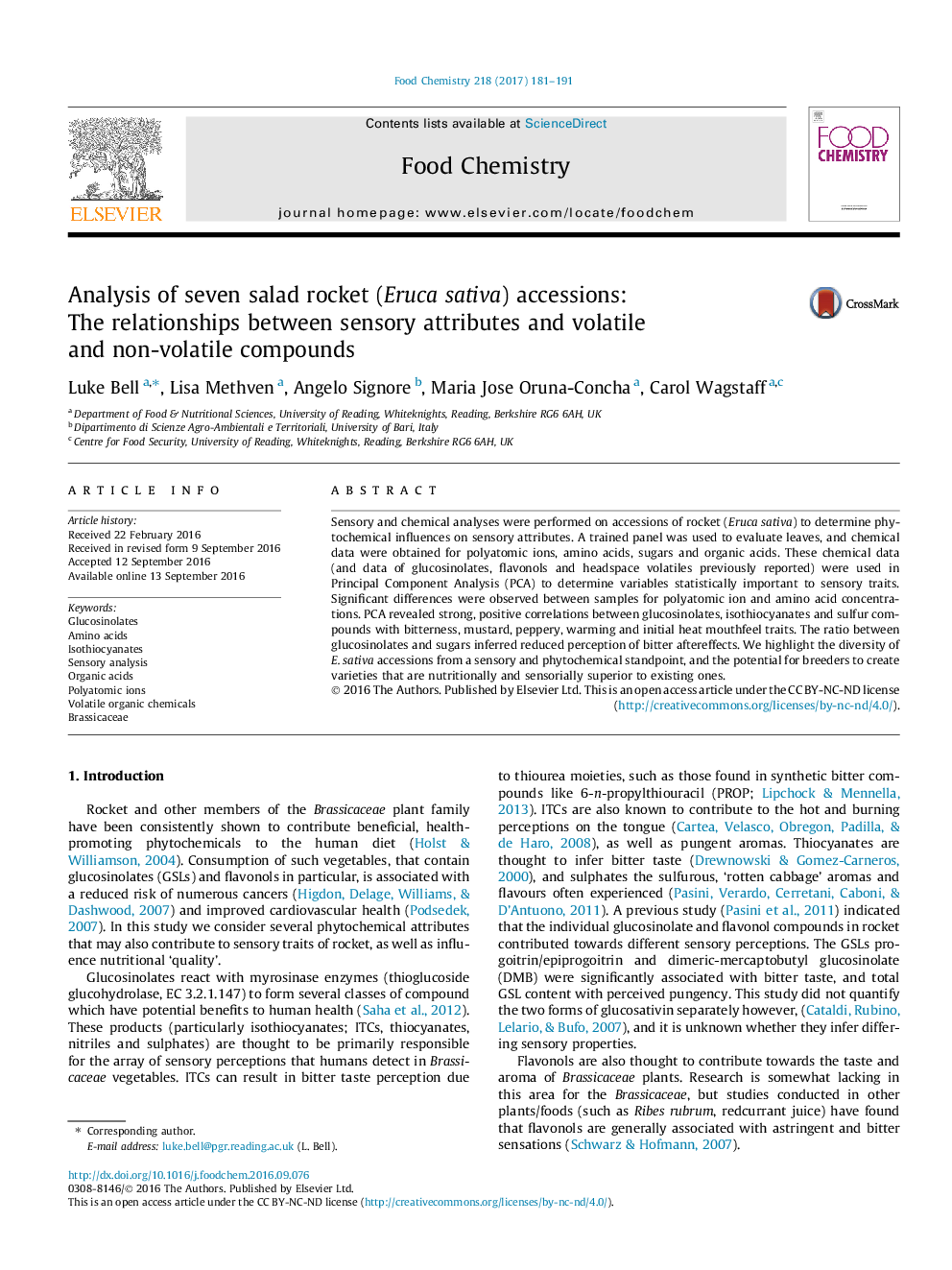| Article ID | Journal | Published Year | Pages | File Type |
|---|---|---|---|---|
| 5134054 | Food Chemistry | 2017 | 11 Pages |
â¢Extensive phytochemical & sensory analysis conducted on 7 rocket salad accessions.â¢Polyatomic ion & amino acid concentrations vary significantly between accessions.â¢Isothiocyanates & sulfur volatiles associated with hotness & bitterness.â¢'Green' VOCs & amino acids negatively associated with pungent sensations.â¢Glucoraphanin & glucoerucin not correlated with sensory attributes.
Sensory and chemical analyses were performed on accessions of rocket (Eruca sativa) to determine phytochemical influences on sensory attributes. A trained panel was used to evaluate leaves, and chemical data were obtained for polyatomic ions, amino acids, sugars and organic acids. These chemical data (and data of glucosinolates, flavonols and headspace volatiles previously reported) were used in Principal Component Analysis (PCA) to determine variables statistically important to sensory traits. Significant differences were observed between samples for polyatomic ion and amino acid concentrations. PCA revealed strong, positive correlations between glucosinolates, isothiocyanates and sulfur compounds with bitterness, mustard, peppery, warming and initial heat mouthfeel traits. The ratio between glucosinolates and sugars inferred reduced perception of bitter aftereffects. We highlight the diversity of E. sativa accessions from a sensory and phytochemical standpoint, and the potential for breeders to create varieties that are nutritionally and sensorially superior to existing ones.
